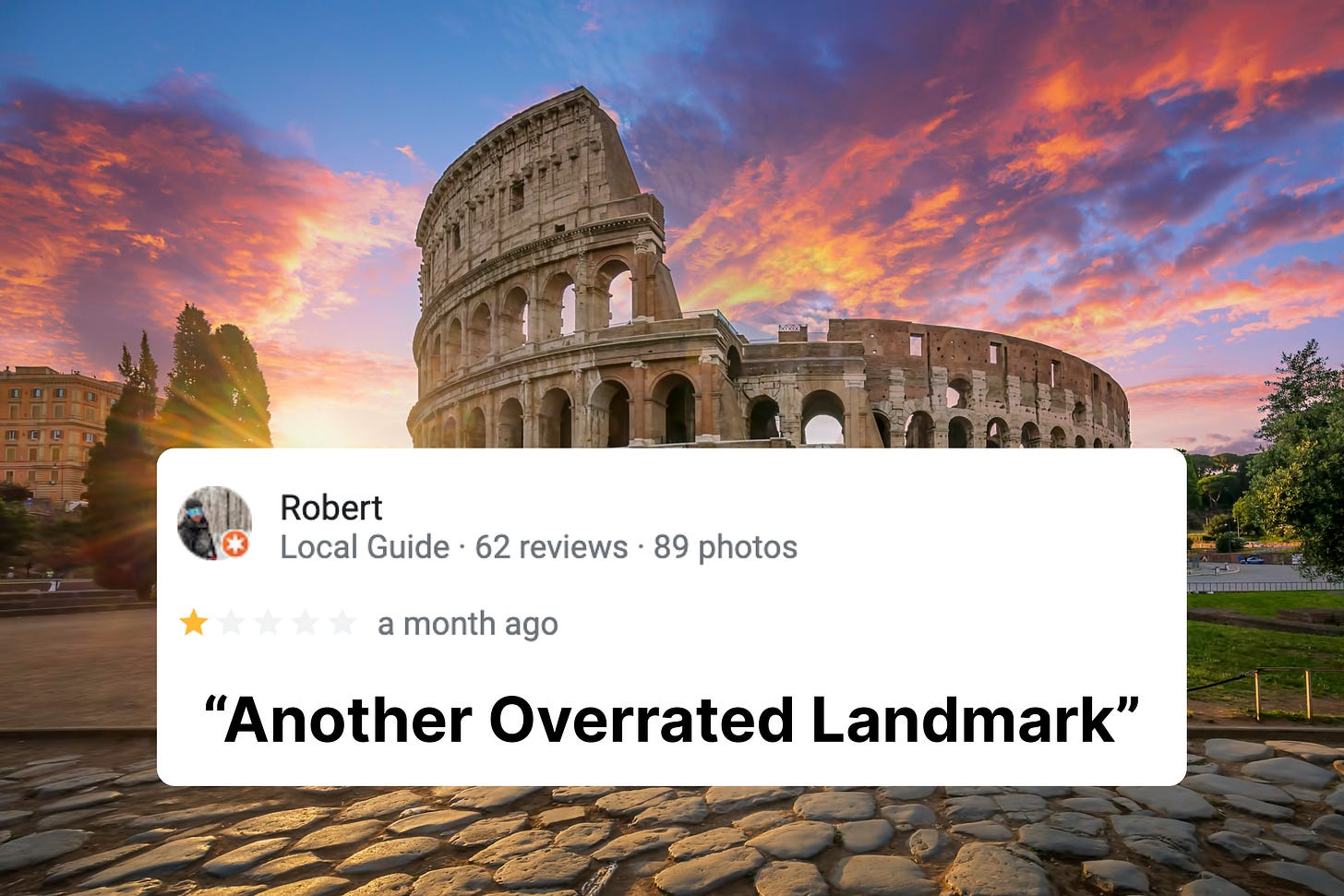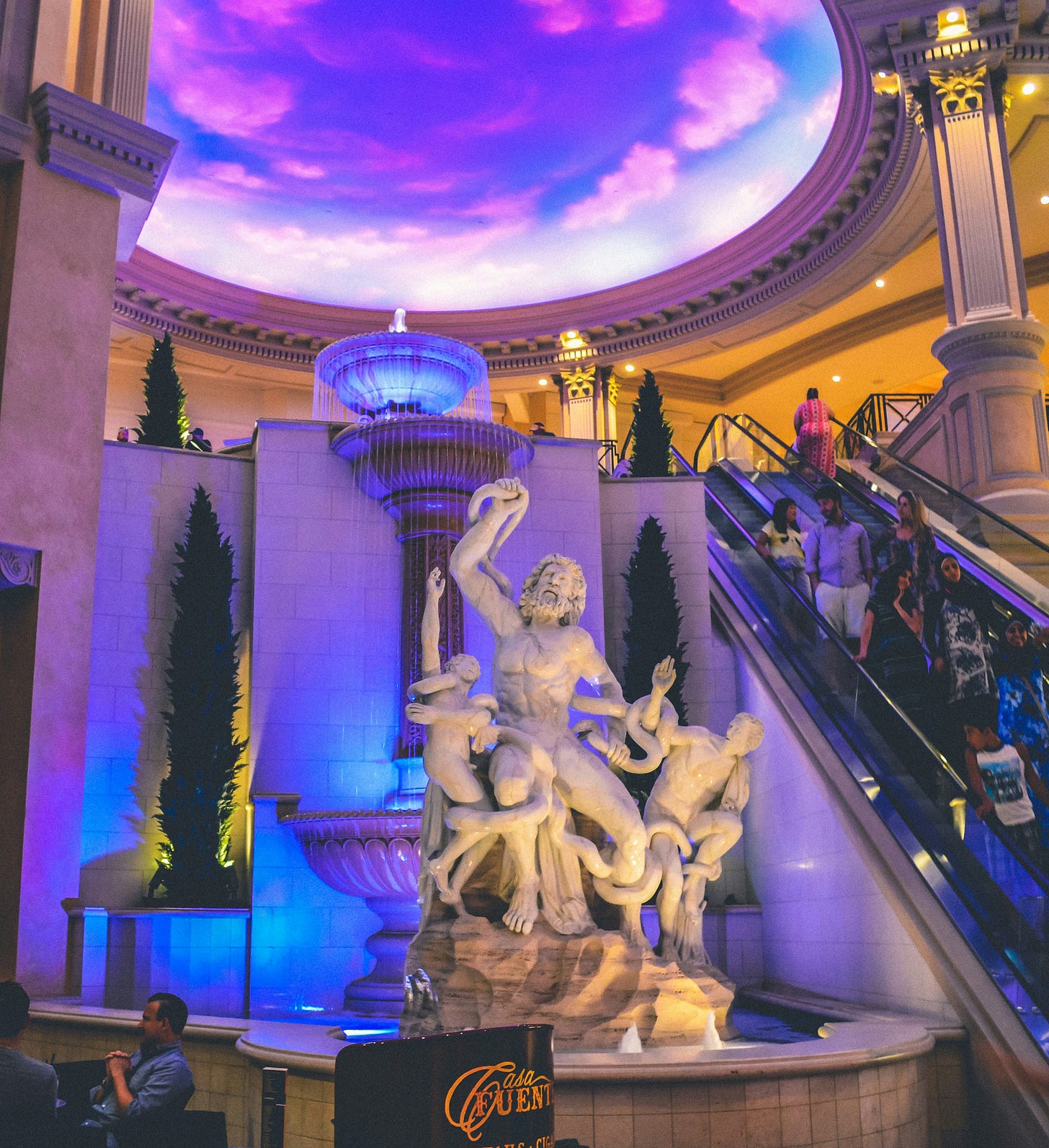Why You Should Let the Haters Hate
They are a Mark of Authenticity
“Another Overrated Landmark”
So states a “Local Guide” named Robert reviewing the Coliseum in Rome - one of the best-preserved and most iconic remnants of history’s greatest empire - standing largely intact through two thousand years of onslaught by barbarians, tourists, and the elements.
“There are no seats in front of and in the cathedral!”
Says “Manu”, who visited St Peter’s Basilica - the largest church in the world, designed by Michelangelo - and delivered a crushing blow to the so-called “attraction,” its architect, and presumably God himself in the form of a one-star review.
Haters gonna hate.
And while it's tempting to bestow on these dunderheaded critics a star rating that approximates their value, they do serve an important function in the system.
Without sour little princesses willing to complain of peas under their mattresses and snooty little princes eager to criticize the decorations at Windsor Castle, we might believe that the wonders of civilization and of nature were indeed too wonderful to believe - too good to be true.
If all 100,000 reviewers say their experience visiting the Coliseum was perfect (5.0 Stars), we might suspect that the system had been gamed, and what one really finds at the end of the cue is a Las Vegas-esque foam and plaster model: a tourist attraction meant to fill the gift shop.
But 4.7 stars is different. An average of 4.7 stars spread across a sufficient number of reviews indicates both greatness and legitimacy. Greatness, because the overwhelming majority of sane people recognize their privilege when walking in the very footsteps of gladiators and emperors. Legitimacy, because the haters and scamps have been allowed in too, but all but the most hateful reserve their vitriol for the restaurant next door rather than smear it across the foundations of Western Civilization.
4.7 stars is just about as good as it gets within an open, democratic system. If the “dear leader” gets more than 4.7 stars, then you probably live in North Korea, and the voting has been rigged.
Give Your Deal Patina
All of this is why you should allow imperfections to mar the pristine image of yourself and your company that you’re working to communicate to the world.
These imperfections are patina. They demonstrate authenticity. They show that you’re the genuine article, not some cheap knockoff made to fool the tourists.
There are lots of ways you can add this patina (or simply let it show through):
You can admit some of the mistakes you’ve made along the way
You can communicate that the reason you hired your VP of Sales was because you weren’t very good at founder-led sales
You can be careful not to inflate your metrics (or allow them to become inflated in your investor’s mind)
You can focus attention on your product's strengths by pointing out a few areas where the competition has an advantage.
If you can’t think of any way to review your company, yourself, or your product in a way that doesn’t result in 5.0 stars, then you really are delusional. But it’s unlikely your investors are.
I’m not, of course, suggesting you go on a rampage - openly disparaging everything you’ve built. But most founders don’t give one-star reviews to their own company. That’s not usually the problem.
The problem is when you work so hard to shield the investor’s eyes from the one, two, and three-star details that the investor suspects you’ve silenced the haters and all those 5.0-star ratings can’t be trusted.
Maybe you’re the startup equivalent of the Grand Canyon or the Coliseum:
“Absolutely amazing”
“Worth the wait”
“Far beyond my expectations”
But without a few negatives to take you down to a 4.6 or 4.8…
“It was hot, and the lines were long”
“Just an old building really”
“Disney World is just as cool, but it’s closer”
… You probably won’t sound credible.




